What Is Google Drive and How Does it Work? – A 2025 Guide
If you’ve ever used Google or any of its services, you’ve probably come across the name of Google’s best storage cloud solution, Google Drive. How does Google Drive work, though? In this article, we’ll cover the basics of what it is and what it’s most commonly used for.
We will also go over how to use Drive to create and collaborate on documents with Google Docs, Sheets and Slides — Google’s answer to Microsoft Office Online. We’ll also look at how Gmail and other apps use Google Drive’s unique teamwork environment.
Drive is the most popular cloud service in the world. In fact, anyone with a Google account automatically gets a Drive account as well. This means that if you’re a Google user, you don’t have to go through the hassle of creating a separate account for your online storage, making Drive a convenient solution for anyone who needs to upload and share files online.
If you’re curious about all of the ins and outs, you can read our full Google Drive review. Otherwise, keep reading for more information on how Google Drive functions, as well as how you can use it to back up your files and keep your computer free of clutter.
10,000+ Trust Our Free Cloud Storage Tips. Join Today!
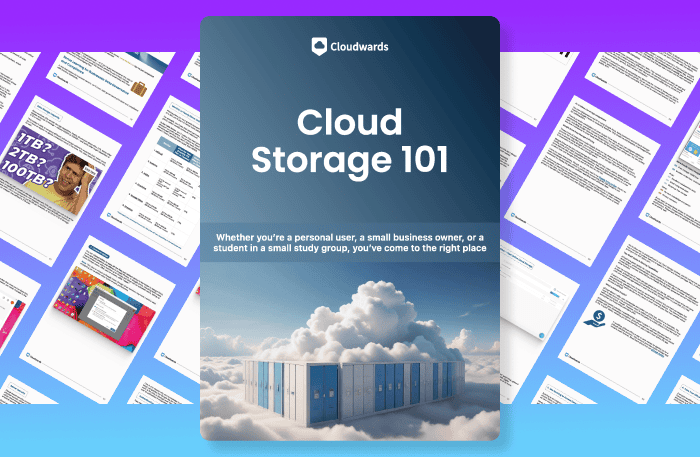
- Demystify cloud storage terminology and key concepts in plain language
- Discover easy-to-implement techniques to securely backup and sync your data across devices
- Learn money-saving strategies to optimize your cloud storage costs and usage
-
02/06/2025 Facts checked
This article was updated with more information on Google Drive’s features, functionality and third-party app integrations.
-
05/02/2025 Facts checked
We added details about Google Drive’s Gemini capabilities, as well as information about native features, offline work, third-party integrations and security.
-
07/31/2025 Facts checked
This article was updated with more detailed explanations of how Google Drive’s features can benefit users.
What Is Google Drive?
Google Drive is a cloud storage service, and like all cloud services, its primary function is to take some load off your hard drive. Cloud storage works by uploading your files to its own remote servers — or the “cloud” — freeing up space on your computer. This leaves more space on your devices for more important uses, like installing large apps and games.
However, cloud services offer many advantages over traditional storage. When your files are in the cloud, you can access them from wherever you are with any device with an internet connection. Plus, you can share them with other people, which opens up new avenues for online collaboration.
If you have a Google account, you already have Google Drive. Simply signing up for an account gets you 15GB of free storage, which puts its free plan near the top of our best free cloud storage list. As a cloud-native solution, Google Drive operates directly through your browser and updates automatically, requiring no manual software installations beyond the sync client.
However, Google uses Drive for Google Photos storage and to store your Gmail attachments and Google Workspace documents, which can take up a lot of that space (read our guide on how to remove Google Photos duplicates if you find you have uploaded multiple copies). We also have a guide on how to move files from Google Drive to Google Photos.
This means you might want to upgrade to a paid plan. Luckily, Drive’s prices are pretty flexible, and it can likely accommodate your needs. If you need just a slight upgrade, you can get the 100GB plan for only $1.99 per month. If that’s still not enough, its 2TB plan comes at a monthly cost of just $9.99.
While Google Drive is generous with storage options, it does have some limitations: Individual files can’t exceed 5TB in size, and users are limited to uploading 750GB per day.
Unfortunately, Google has often come under fire for its suspicious privacy policies, and Drive is no exception to the controversy. Google gives itself permission to scan any Drive file it wants. Plus, there’s no zero-knowledge encryption, which means Google holds all encryption keys to your files and can view them whenever it wants to. Read our “Is Google Drive Secure?” guide to learn more.
Thankfully, there are ways to encrypt your data if you’re particularly concerned about privacy. Encrypting your files using an encryption service such as Cryptomator before you upload them to the cloud ensures that no one can scan or view them without your permission.
While Google Drive doesn’t offer zero-knowledge encryption by default, Business users can enable client-side encryption to maintain complete control over their encryption keys.
Enterprise users can integrate Google Vault for advanced data retention, legal hold and compliance features for Drive content. Google Drive also implements a zero-trust security model for Enterprise users, requiring continuous verification regardless of user location or network.
Google Drive does protect your data during transmission using Transport Layer Security (TLS) encryption, ensuring your files are secure while being uploaded or downloaded. Once your files reach Google’s servers, they’re encrypted using 128-bit Advanced Encryption Standard (AES) encryption, adding another layer of protection to your stored data.
For additional security when accessing your account, Google Drive supports two-factor authentication (2FA), which requires a second verification step beyond your password.
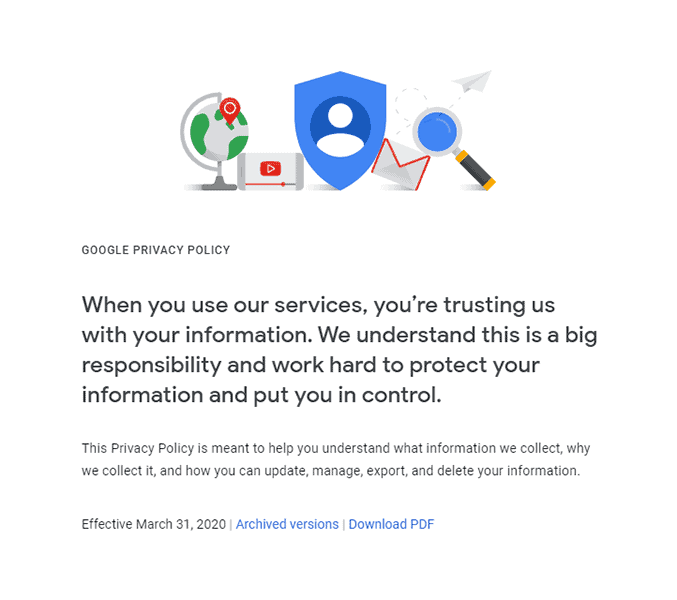
How Does Google Drive Work?
Google Drive’s main purpose is to store files and sync them to your computer. You can use Drive’s website to upload files and edit them online. The AI-powered smart file organization suggests folders and automatically categorizes files based on your usage patterns and file content.
This intelligent system learns from your behavior over time, becoming increasingly accurate at anticipating where you might want to store new files or which existing files you might need to access.
Plus, if you install the desktop client, you can use the Drive folder on your computer to continuously sync important files to the cloud, making sure they’re updated as you work on them.
Google Drive also supports differential uploads, meaning when large files are edited, only the changed portions of the file need to be uploaded, saving time and bandwidth. This is particularly beneficial when working with sizable documents, spreadsheets or media files that undergo frequent but minor changes.
Drive recently expanded its syncing capabilities by adding the option to sync any folder on your computer to the Drive servers. This lets Drive function as a backup service as well. It doesn’t quite have all the functionality of a dedicated backup service like IDrive, though (more on this in our Google Drive vs IDrive comparison). If you need one, take a look at our best online backup services list.
Google Drive doesn’t just help you store files. It works as a sort of hub for all of your Google activity. Drive works with Google’s entire ecosystem of apps, including the Google Workspace of office apps. This means you can use it to create Google Docs files, Google Forms surveys, Google Sheets spreadsheets or Google Slides presentations.
Drive’s search feature supports natural language queries, allowing you to find files using conversational phrases like “find my budget spreadsheets from last month” rather than just keywords. Plus, the “quick access” feature uses machine learning to predict which files you’re likely to need based on your usage patterns and workday schedule, placing them front and center when you open Drive.
Google Drive also offers offline mode and the Google Docs Offline Chrome extension, allowing you to create, view and edit files without an internet connection, with changes automatically syncing when you reconnect.
It is also one of the best cloud services for sharing, thanks to its highly customizable sharing options. When you share files on Google Drive, you can set permissions for each person you’re sharing with. You can even let other users edit Google Docs files with you, allowing you to collaborate with up to 100 people on any Google Workspace document.
Google Drive’s sharing functionality has been enhanced with more granular access controls. While editors have extensive permissions in shared folders, including the ability to add, organize and edit files, they cannot delete files — a restriction that helps prevent accidental data loss.
For enhanced security, users can set expiration dates on shared files through the Google Drive API, automatically revoking access after a specified period (typically 30 days). Additionally, Google Drive maintains version history for files up to either 100 versions or 30 days, whichever comes first, allowing you to track changes and restore previous versions if needed.
Users can also now add and edit comments directly in PDF files by highlighting text, making document review and collaboration more efficient, as no third-party PDF-editing tools are needed.
Users can also request electronic signatures on PDF files directly in the platform. This integration streamlines the process of managing vendor agreements, customer contracts and stakeholder sign-offs without requiring separate e-signature services.
In addition, Business and Enterprise users can access an “activity” view that provides a comprehensive overview of file activity across Workspace in one place, making it easier to track and manage collaborative work. With this unified activity dashboard team leaders can monitor progress, identify bottlenecks and ensure everyone is contributing appropriately to shared projects.
If your work demands a lot of online collaboration, the best solution for you might be to use Google Drive, especially if you need to work together on various Google Docs files.
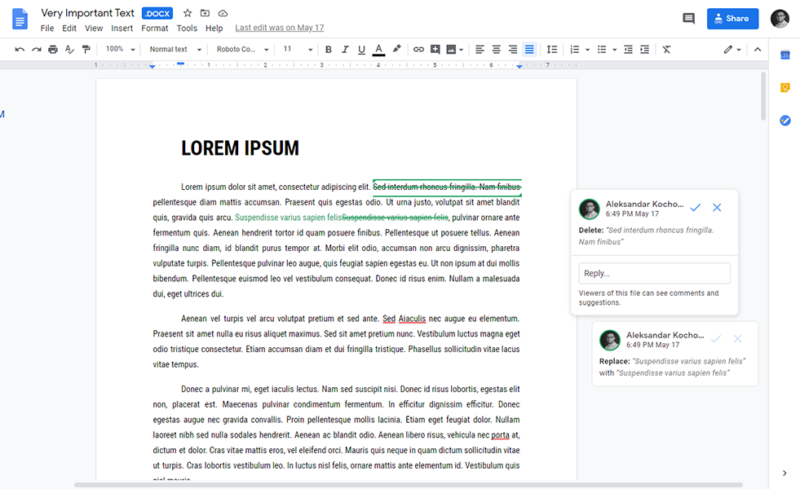
How to Use Google Drive
To use Google Drive, you must first create a Google account if you don’t already have one. Signing up for an account will let you use Google Drive and give you access to other Google services, such as Gmail and Google Docs. If you already have an account but you want a new one, you can check out our guide on how to change your default Google account.
To do this, simply go to Google’s homepage and click the “sign in” button in the top-right corner. Then, click “create account” and enter the username and password that you want. You’ll also have to enter some personal information, like your name and birthdate. Next, choose your preferred privacy options and agree to the privacy policy, and your account will be created.
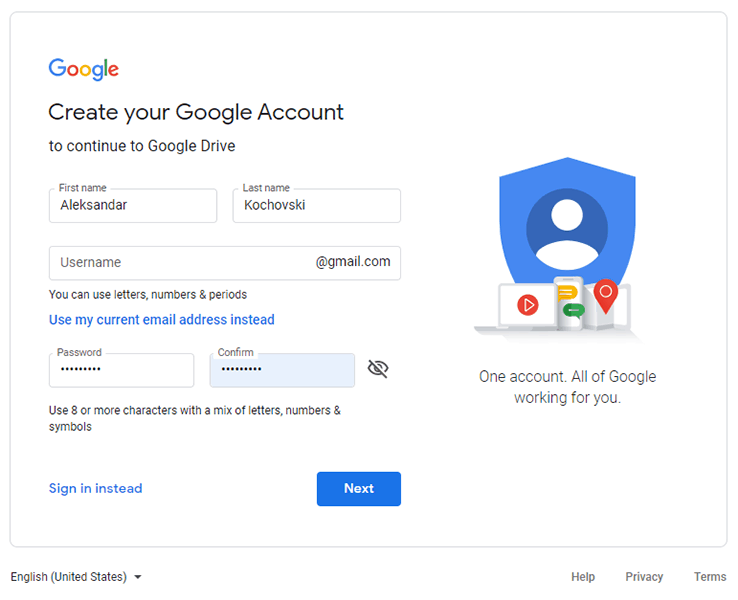
There are several ways to access Drive. Your first encounter will probably be through the Google Drive website. From there, you can download its desktop client, called “Backup and Sync from Google.” You can also download the mobile app to keep your photos updated and to back up your phone. Let’s take a look at all of these individually.
In Your Browser
To access Drive in your browser, go to drive.google.com and log in with the account you just created. The website’s interface is fairly intuitive. The design is clean, with lots of white space to help you make out the important features. If a good-looking interface is important to you, read our Icedrive review for more information about one of the best interfaces around.
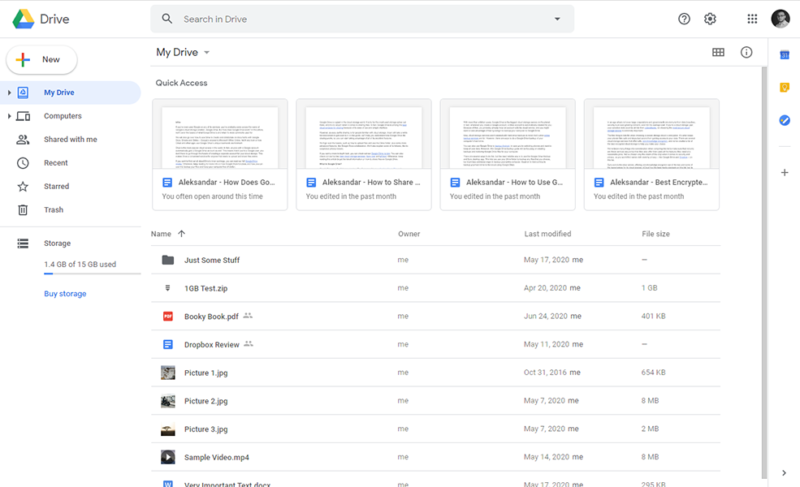
The left side of the screen is home to a navigation bar, where you can access Drive’s tabs. These tabs organize your files by various categories.
The “my Drive” tab houses all of your cloud files. This is also where the Drive folder on your computer gets synced. If you’ve synced any other folders from your hard disk to the cloud, you can find them in the “computers” tab. Meanwhile, “shared with me” keeps all the files that other people have shared with you. These are your main tabs, and you’ll spend most of your time there.
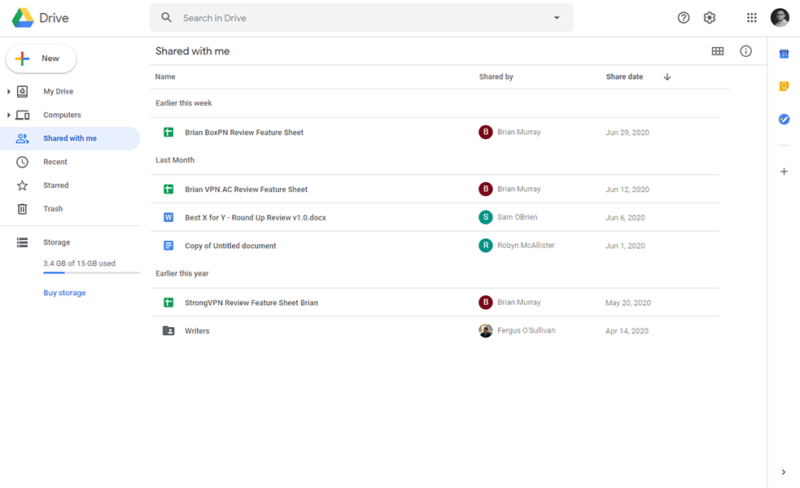
These tabs have their own folder structure, so you can create subfolders to organize your files better. “My Drive” keeps the structure of your computer’s Drive folder, and folders in the “computers” tab have the same structure as the folders on your hard drive that you’ve synced.
There are other tabs, as well. You can find recently accessed files in the “recent” tab. “Starred” is where you can find any files you’ve favorited for quick access. If you want to recover a deleted file, the “trash” tab keeps all the files that you delete for 30 days.
The central area of the browser interface is where you can see all your files and folders. You can drag and drop items to move them around, and you can right-click an item to open its menu of options. “My Drive” has an extra area at the top, called “quick access,” for your frequently used files.
At the top of the screen, there is a search bar that lets you look for files by name. Drive’s search functionality is now enhanced with AI capabilities, helping users quickly find relevant files based on their activities and content, not just file names.
When you click on a Drive file or folder, several icons appear in the area below the search bar. These icons let you perform actions like sharing, renaming, deleting or moving the item you’ve selected. You can find these options and more in the right-click menu.
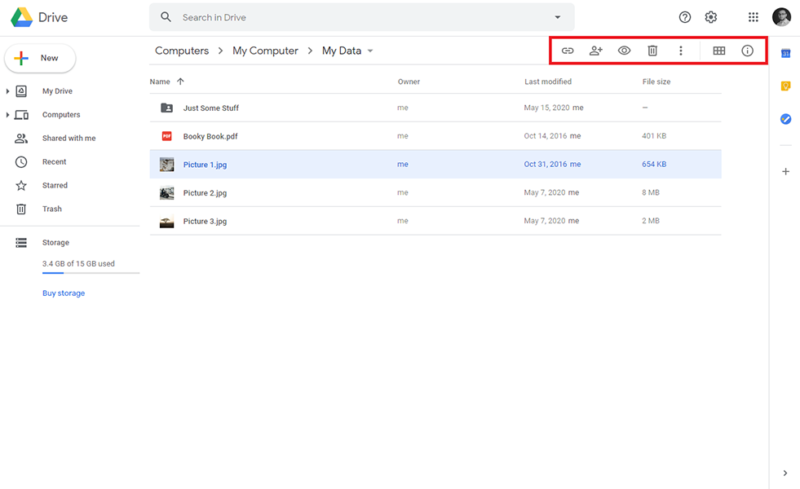
The right-hand side of the screen has a special toolbar with shortcuts to either Google’s own apps or third-party apps that work with Google. We’ll look into these later in this guide.
Now comes the most important part: how to interact with Drive files. First, you have to upload a file to Drive. To upload files, you can click on the “new” button in the top-left corner, then select the file or folder you want to upload. An easier method is to simply drag and drop the file into the browser window, which will upload it to the folder you have open in the website interface.
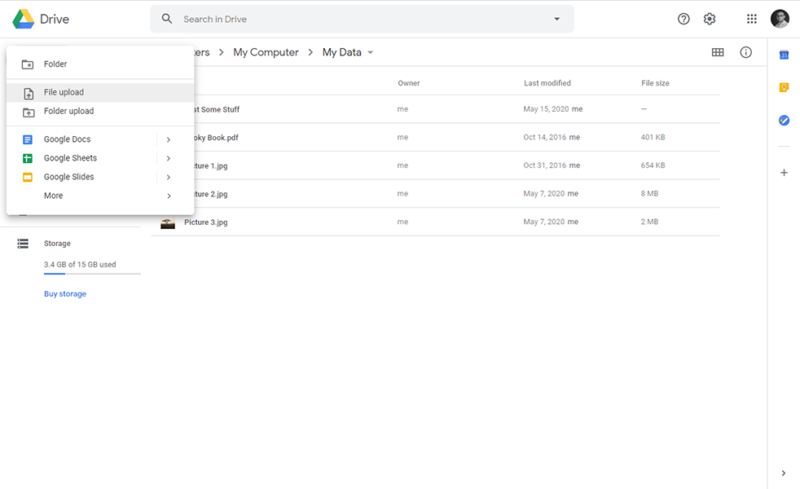
Now that your files are in the cloud, you can right-click on them or use the icons at the top of the screen to interact with them. Both have the same options. Probably the most important are the two sharing options. We have a guide on sharing with Google Drive, so we won’t go into too much detail here.
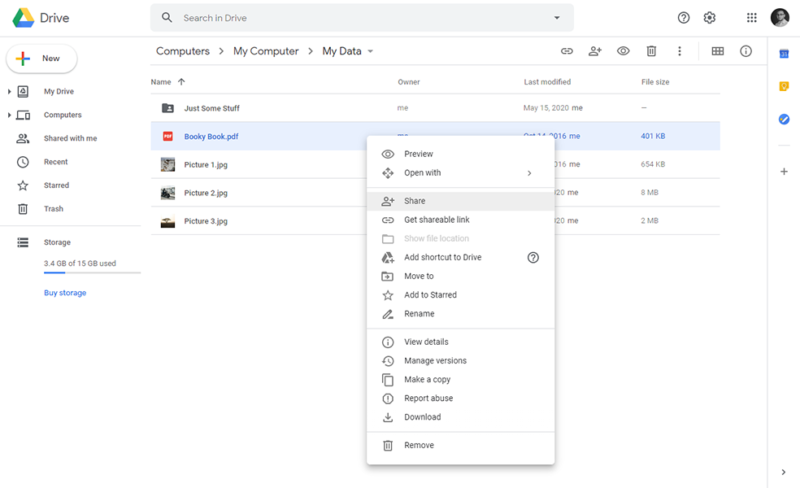
The first option is the simpler of the two: “get shareable link.” Clicking on this will generate a share link that you can copy and send. The second sharing option is called “share.” Clicking on it opens up a dialog where you can add people to the file via email address. You can then set various permissions for each person.
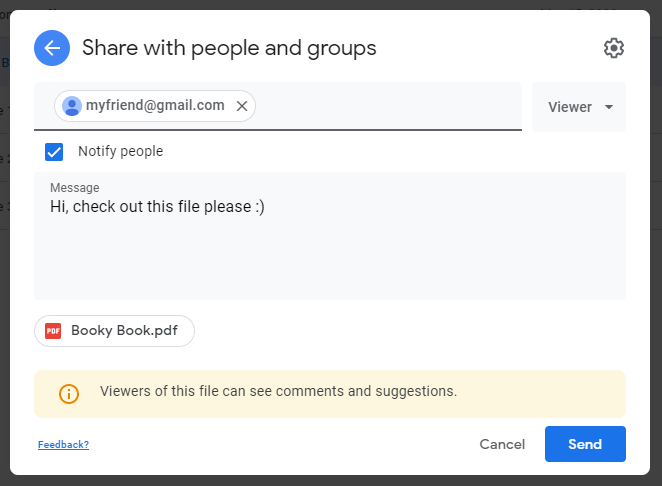
Another important option here is the “preview” function. You can preview many file types, including images, videos, PDF files and Microsoft Office and Google Workspace documents. Once you’re in the preview window, you can choose “open with” to open the file you’re previewing, either with a Google app — such as Google Sheets or Google Slides — or with a third-party app.
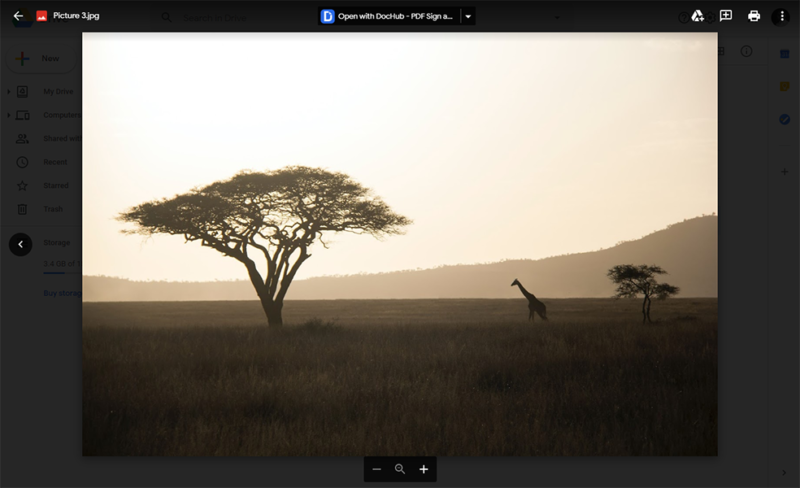
Moving items around is easy enough: Just click and drag an item to move it into another folder. You can also right-click and use the “move to” function. If you move an item to the “trash” tab, the item will be deleted. You can also do this by clicking on the “remove” option in the right-click menu or the contextual icon at the top.
Other options are self-explanatory, such as “download,” “rename,” “make a copy” and “add to starred.” That wraps up the browser interface section, so let’s move onto the desktop portion of this guide.
On Your Desktop
The desktop app is called “Backup and Sync from Google.” Installing this app creates a Google Drive folder on your computer. This is your main sync folder, a feature that was first introduced by Dropbox but is now a standard feature among cloud services. Files in this folder are automatically uploaded to Drive. Plus, you can choose to sync any other folder, too.

The app itself doesn’t do much on its own. It appears as an icon in your taskbar, and clicking it brings up shortcuts to your Drive folder, the Drive website and Google Photos only. From here, you can also pause syncing or go into the “preferences” menu to change some options around.
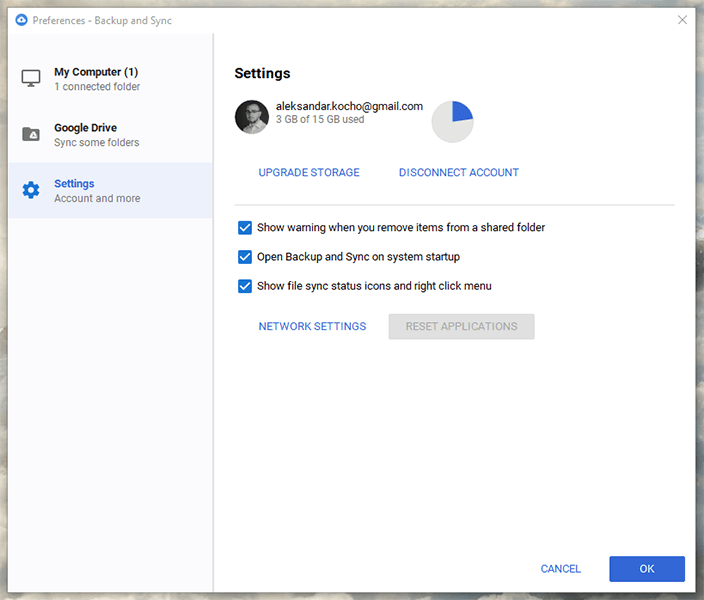
The most important function of the app is that it adds options to your right-click menu. If you right-click on a folder on your hard drive, you will get a new “Google Drive” submenu, with an option called “sync this folder.” This will create a link between Drive and that folder.
Then, to upload files, you can just put them in that folder, and whenever you edit them, it will update the cloud versions as well.

Files that have already been synced get other options in this menu. Clicking on “share” in the right-click menu will open up a sharing dialog, just like the “share” option in the web interface. “Copy link to clipboard” will generate a sharing link, and “view on the web” will take you to the web version of the file.
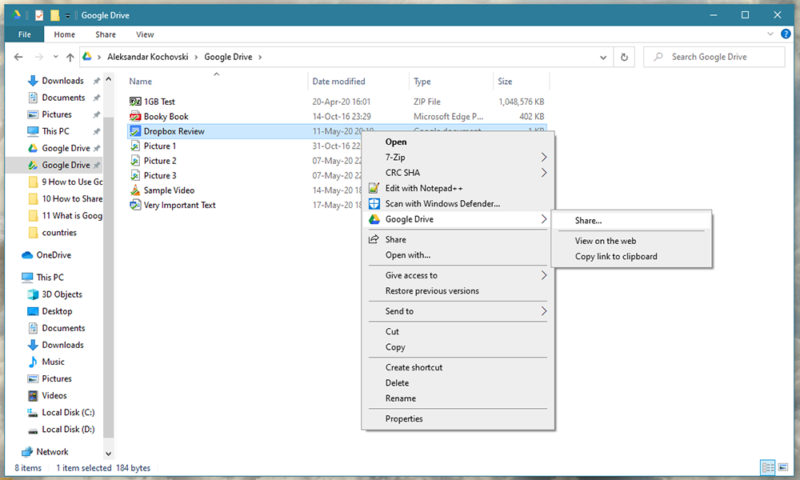
Now that you have a better grasp of Drive’s desktop environment, let’s go back to the Drive folder for a second. Although any folder you sync to Drive is accessible from the website, only the Drive folder is a true sync folder. This means that having the app installed on multiple computers will result in the same Google Drive folder being synced across all devices.
This can be very useful in some scenarios. For example, you can log in to your account on both your personal computer and the family’s media computer. Then, you can place movies and music in the Drive folder, and they’ll be available for the whole family to play. This can be especially advantageous to businesses that can give all of their employees access to the same files.
Note that Google Drive for desktop now officially supports ARM64-based Windows PCs, providing native performance and better battery efficiency on these increasingly popular devices. Users with newer Windows devices powered by ARM processors will experience faster syncing and reduced power consumption.
On Mobile
The mobile app is very easy to use, and it can work on both Android and iOS. It’s mostly a standard cloud app, with some unique features. There is a homepage with your recent files, a “starred” tab, your “shared with me” tab and, of course, “my Drive,” where all your files are.
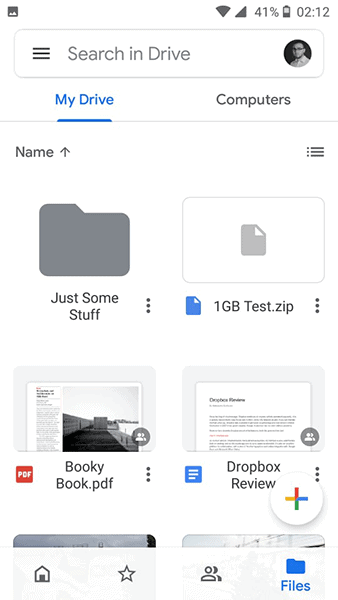
There is also a “plus” button that you can use to create a new folder, upload files or scan a document. You can also use this button to create files with Google Docs, Google Sheets or Google Slides.
The Google Drive mobile scanner now automatically enhances scanned documents, making mobile scans crisper and clearer with intelligent image processing. This feature is especially useful when you need to digitize physical documents while on the go, as it improves readability without requiring manual adjustments.
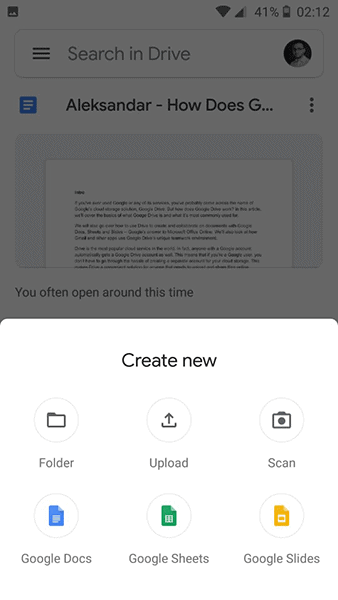
Each file and folder has a menu with options, which are mostly the same as the website’s right-click menu options.
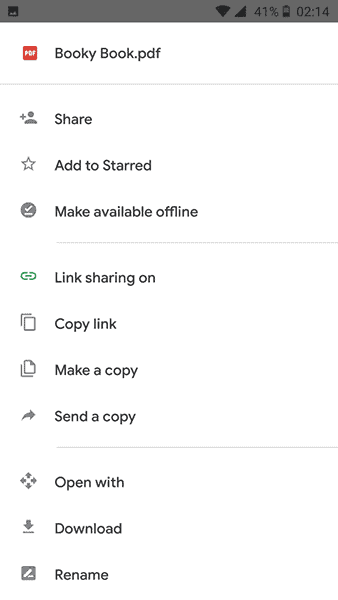
You can also use Google Drive’s storage to automatically upload photos and videos. However, the actual upload work is done by the Photos app, which you have to install separately.
There are two settings for the quality of the uploaded photos. “High quality” photos are compressed using an AI algorithm to make the images smaller, and they don’t count against your storage quota. An “original quality” photo is uploaded as-is, but it will take up storage space.
Videos uploaded to Drive now support instant playback without waiting for processing, allowing for immediate viewing of uploaded video content and improving the user experience when sharing video files.
Google Drive also now generates transcripts for uploaded videos, enhancing navigation and accessibility by allowing you to search for specific content within videos and jump to those moments directly. This feature is particularly valuable for educational content, meetings and any situation where you need to locate specific information without watching the entire video.
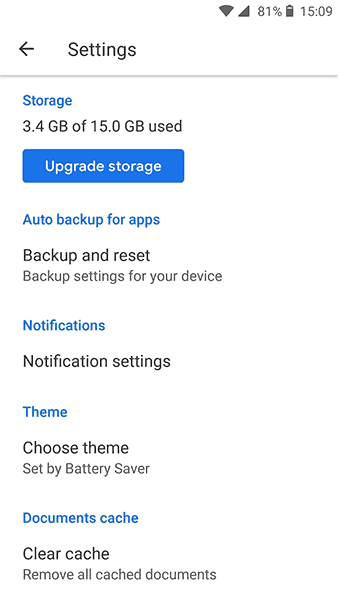
Google Drive and Gmail Integration
Your Gmail and Drive accounts have a mutual give and take. Gmail uses Drive to store your email attachments, and these count toward your storage limit. Likewise, Drive uses Gmail to share files. If you’re a frequent Google user, you may want to make Gmail your default email client.
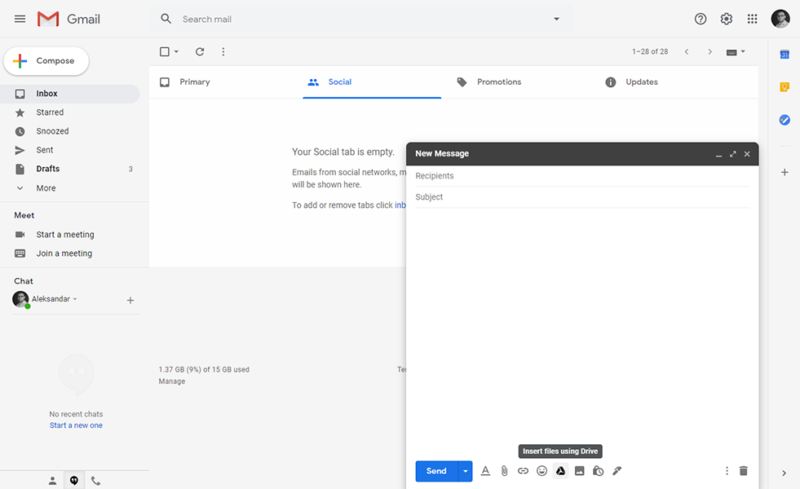
Gmail also has an option in the “compose” screen to send Google Drive attachments. It’s near the bottom of the window and is indicated by a dark-gray Drive logo.
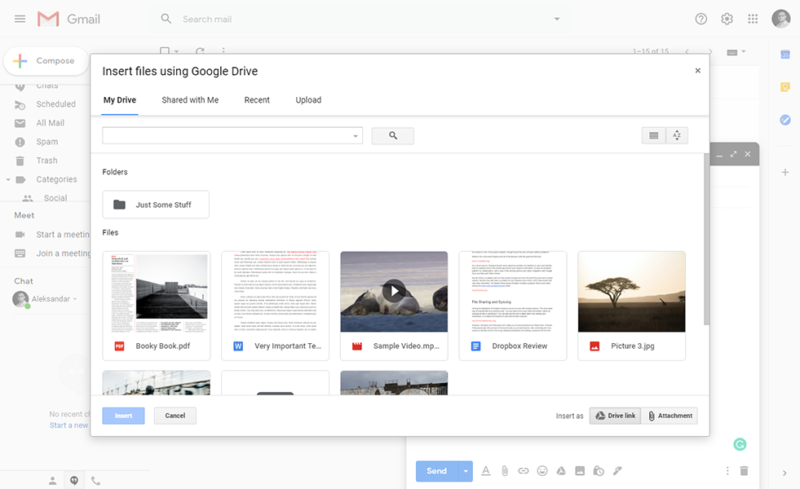
Using Third-Party Google Drive Apps
Google Drive has outstanding third-party app support, but how does it work with these apps? Of course, it works with Google Workspace — Google’s version of Microsoft Office — but it can also automatically convert uploaded Microsoft Office files (Word, Excel, PowerPoint) into Google’s native formats (Docs, Sheets, Slides) for easier online editing and collaboration.
Google also has a whole app store called the Google Workspace Marketplace (formerly the G Suite Marketplace). Marketplace offers hundreds of third-party applications that integrate with Google Drive, expanding its functionality beyond what’s available by default. This can enable Drive to preview and open many more file types.
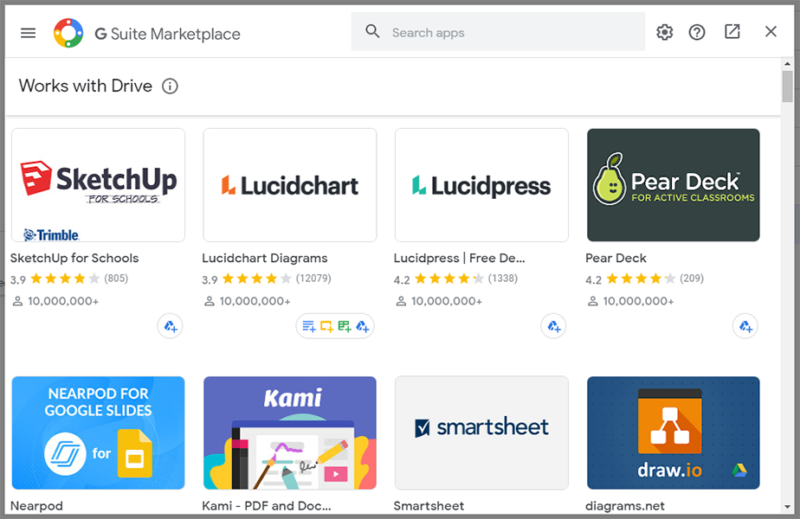
There are many apps in this store, and they can really change the way you work with Drive. To connect an app, click on the “plus” icon in the toolbar on the right side of the screen. Then, look for the app in Marketplace and click on “install.” You can also do this by right-clicking on a file, selecting “open with” and clicking on “connect more apps.”
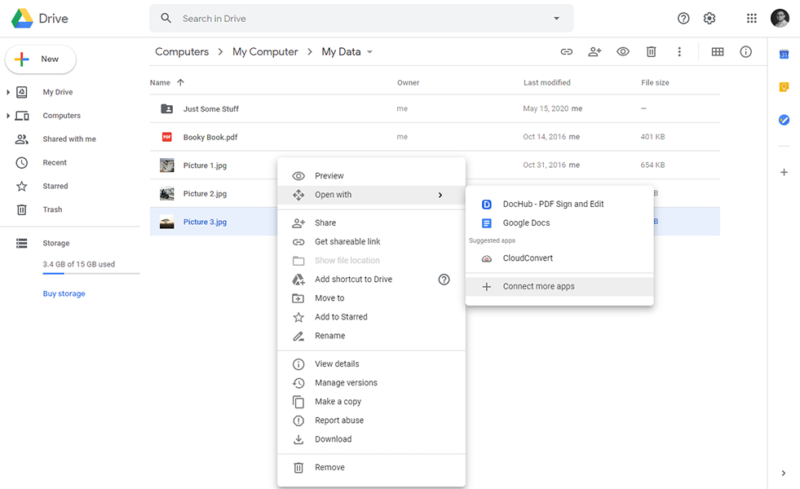
Google Drive now integrates with Gemini AI to help users summarize documents, extract key information and get quick insights from stored content without manual searching. This feature works with the PDF viewer as well. Plus, Drive now allows you to use Gemini AI to create new files and folders through natural language prompts in the side panel, streamlining content creation.
Another popular integration is Adobe Acrobat, which allows users to edit PDFs and add e-signatures directly through Google Drive. You can also use apps like Pixlr to edit images, create 3D files with SketchUp, organize your workflow with Asana and much more.
Final Thoughts
Google Drive is a very powerful cloud service, but it comes at the cost of privacy. We recommend Sync.com as the best cloud service on the market. Plus, it comes with airtight security.
That said, Drive is still very capable, and you probably already have it, so we hope you now understand more about it. If you have any questions about how Drive works, how to upload files and sync them, how to stop Google Drive from syncing or anything else we haven’t covered, feel free to leave a comment below.
You can also check out our guides on how to transfer ownership of a Google Drive folder and how to transfer Google Photos. Thank you for reading this guide on what Google Drive is and how it works.
FAQ
- The short answer is yes, it is safe to use. However, you should be aware that Google scans your files for information, which it uses to create an advertising profile on you. If you feel that’s too intrusive, Drive might not be for you.
- Only you can see your own files. Any shared files or folders are also viewable by the people you’ve shared them with. Anyone with your email and password can also view your files, so be careful with your account details.

